Last updated on April 7th, 2024
Mrs. Penashue protects traditional Innu culture–and the environment–hoping they have a future in Labrador
by Sandra Phinney
Capturing the essence of Labrador in words is like trying to capture the moon or a moose with your bare hands. For starters, Labrador is vast. It’s so vast that all of Atlantic Canada—mainland Newfoundland, Nova Scotia, Prince Edward Island and New Brunswick—could fit inside Labrador with space to spare.
And, oh, the light! There’s something about the light—and the air—that gives things a three-dimensional quality. Even the 1200 km Trans Labrador highway commands a certain respect, brought home by signs like the one outside of Churchill Falls: NEXT SERVICE 294 K. CHECK FUEL.
Labrador is also home to the Innu and Inuit whose roots and wisdom so old mere mortals cannot grasp the significance of it all. Archaeological evidence suggests they inhabited Labrador over 7000 years ago.
The Innu traditionally lived inland and the Inuit were coastal peoples. Now it’s not as distinct and I learned a lot about these cultures when visiting North West River, a small community about 33 km away from Happy Valley-Goose Bay.
North West River: A small community with a big history
Back in the mid-1700s, French fur trader Louis Fornel established a trading post at the North West River. Years later, the Hudson Bay Company set up shop in 1836. This was also the place where Leonidas Hubbard and Dillon Wallace started on their ill-fated trip trying to find the mouth of the George River. In 1905 Mina Benson Hubbard successfully completed her husband’s trek with the help of Indigenous guides.
While visiting the Labrador Heritage Museum—the original Hudson Bay Company store—I met Perry Micheline who shared wonderful stories about trapping and fishing. Luckily, he also shared his favourite recipe: salmon stew. Take a big piece of salmon, place in a pot with a small amount of water—about an inch. “Don’t drown it by using too much water,” Perry said. “Add some chopped onion, chunks of potato, a little salt and pepper and simmer for about 15 minutes.” I’ve since tried this; it’s delicious.
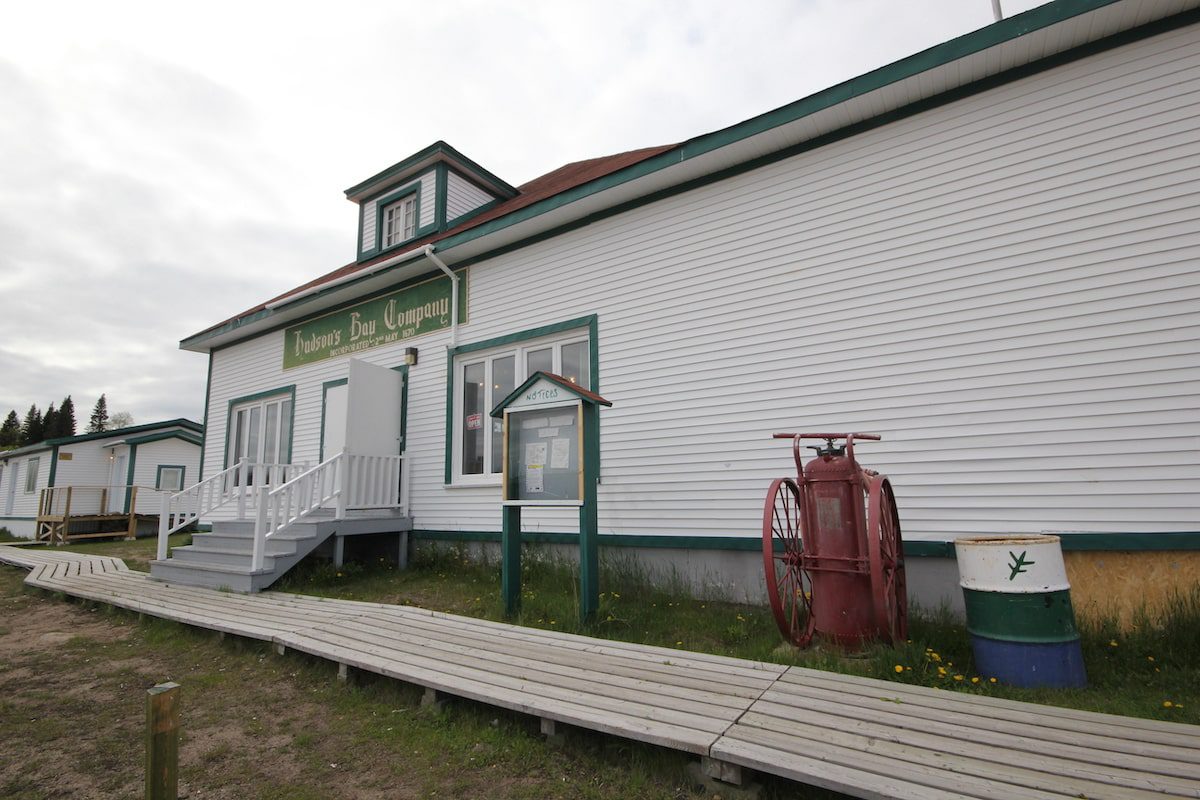
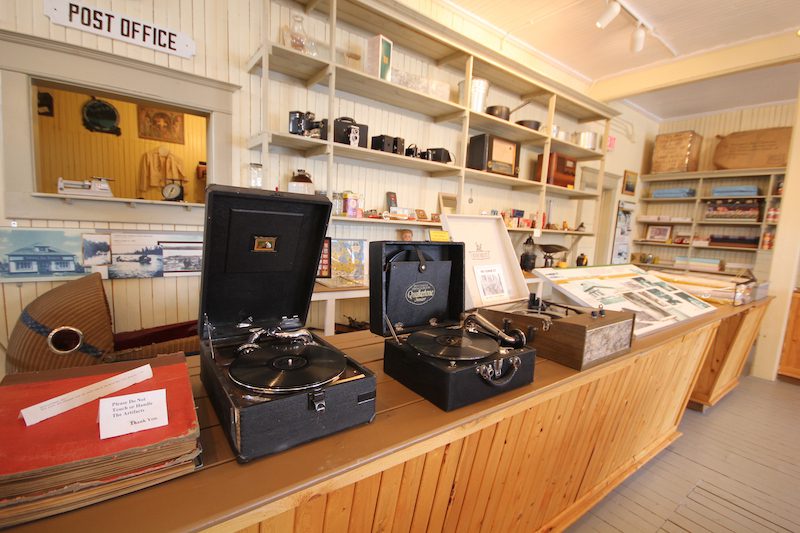
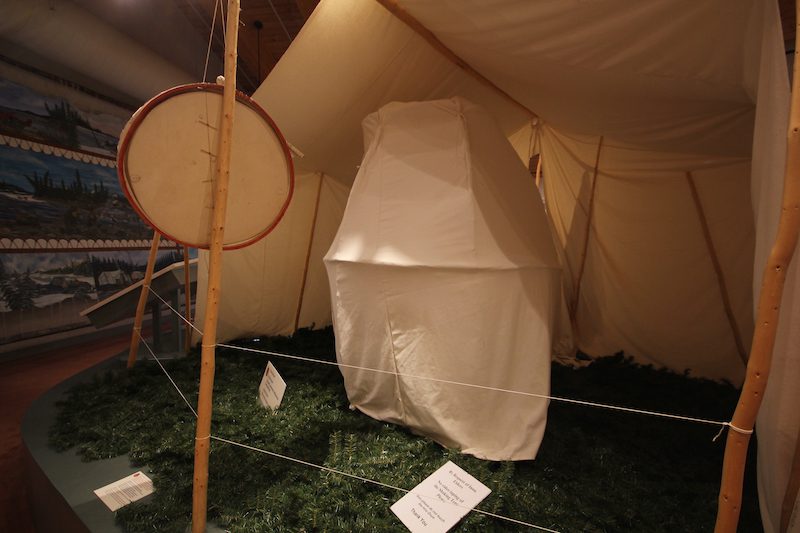
The Labrador Interpretation Center, just a hop-skip-jump away also captured my interest. The permanent exhibit titled “The Past is Where We Come From” is full of artifacts and interactive stations where you can hear stories presented in Inuktitut, Innu-aimun and English. I was especially drawn to the “shaking tent” – a place that foretold of things to come, for example, whether food would be easy to find or not during the coming season. I also learned some myths including a lovely story of how the wolverine created the world.
Read More: Travel Experts Share Hidden Gems in Canada
Meeting famed environmentalist and activist Mrs. Penashue
Along the way, I was introduced to Robin McGrath, a friend of Tshaukuesh Elizabeth Penashue, an elder in neighbouring Sheshatshui. Robin made arrangements for us to see Mrs. Penashue (whom I now respectfully refer to as Mrs. P) in her summer place, just a short drive from where I was staying in North West River. Having read a lot about the Innu activist, I was anxious to meet her.
During the 80s and 90’s Mrs. P led the Innu campaign against NATO’s low-level flying and bomb testing on her beloved land. She was also a key figure in the landmark legal case which determined that the Innu had the right to occupy the Canadian Forces base in Goose Bay, Labrador.
Since then, this elder has led annual spring walks on snowshoes to Pants Lake in the Mealy Mountains, then tenting in the bush for three to four weeks. During the summer, she`s organized 15-day paddles on the Mista-Shipu (Churchill River.) Her purpose? To preserve the traditions of her people. This heroine brings interested adults and youth along, to show them traditional values so that Innu culture—and the environment—have a future in Labrador. Mrs. P is also alarmed at the effect the government-imposed lifestyle has had on her people, and the increased use of drugs and alcohol among the youth in Sheshatshiu. She always says that when she takes kids in the bush in Innu country, they change. They are happy.
Despite no formal education, Mrs. P received an honorary doctorate degree from Memorial University and a National Aboriginal Award for her lifelong work protecting the environment and keeping Innu culture and traditions alive.

Mrs. Penashue often spends part of the summer in her tent a short driving distance from her home in Shetshatshui / Photo by Sandra Phinney
The bounty of camping with Mrs. P
I was determined to meet this legendary woman and arranged to do so the following summer. That’s when I had the good fortune of going camping on Grand Lake with Mrs. P, her husband Frances (now deceased), granddaughter Creelyn, and their dog, Porcupine Quills. We set up a canvas tent and made a floor of fir boughs to sleep on.
Mrs. P taught me how to make sand bread buried in a hot bed of sand and pebbles on the shore. The process consists of gathering small pebbles and making a mound with them on the beach. This is covered with dry brush, sticks and pieces of wood to make a hot fire to heat the pebbles. Then you remove the wood, make a small hollow in the hot pebbles and place a flattened ball of dough in the middle. Cover it up with hot pebbles and return the hot wood on top. After an hour, remove the wood and pebbles and carefully remove the cooked bread. Give it a couple of taps with a stick and any remaining sand or pebbles will drop off.

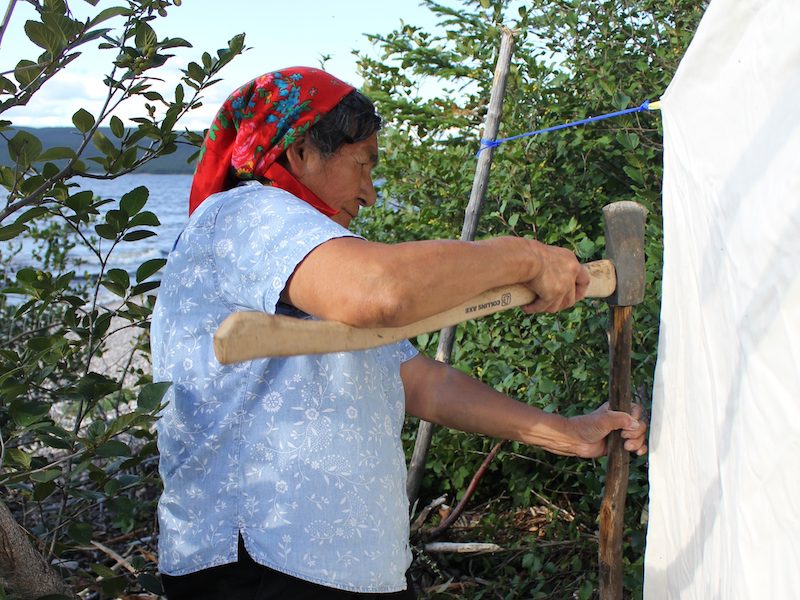
Mrs. P secures the tent with poles she and Frances have cut in the forest / Photo by Sandra Phinney

Mrs. P had carefully pushed the burning branches aside then removed the sand bread from its beach oven. Done to perfection! / Photo by Sandra Phinney
“I am an Innu woman. I am very proud. If I don’t do this, who will?” she says.
One night, we had a visitor. A black bear made circles around the tent, no doubt looking for food. As all the food was inside the tent with us. I had visions of opening everything and laying out a feast for bear. Just wasn’t sure where the creature would sit as there were three adults, a child, and a stove in this small canvas tent on poles; things were cozy.
However, each time we heard the bear circling outside, Frances wandered out and fired his .22 in the air to shoo-shoo it away. Mrs. P said, “Sandra, go shine your light around to see if you can see bear.” Right. As I gingerly walked behind Frances shining the light back and forth, my host sprinkled holy water around the tent and Porcupine Quills barked. This scene repeated itself three times. Five-year-old Creelyn slept through it all.
Steinbeck once said, “We do not take a trip; a trip takes us.” I think about that quote a lot. Now, when each March rolls around, I also think of Mrs. P and imagine her preparing for the spring walk in the Mealy Mountains. I reach out for her memoir, I Keep The Land Alive. Based on journals that Mrs. P kept for many years, it includes details and reflections on Innu culture, politics, and the importance of keeping the traditions alive. And on March 8th, on International Women’s Day, I especially feel Mrs. P’s presence, and am grateful to have met her in my travels. She’s one of my heroines.
* * *
Mrs. P continues to be active. This recent story (Feb 2024) continues to illustrate the depth of her caring.
Robin McGrath`s book Life on the Mista Shipu, is a wonderful resource. In this book, the author guides locals and visitors around parts of Labrador—giving them an insider`s view. The Mista Shipu is known as the Churchill River in English.
More to Discover From Canada
Indigenous Women in Aviation: Flying the Female Skies
In Canada, Indigenous women are making their presence felt in the aviation industry, which has historically been dominated by men.
Where to Stay in Toronto, Canada: Recommendations From Solo Women
Women share their top choices on where to stay in Toronto, Canada, including hotels, hostels, and affordable options across the city.
The Black Fly in Our Chardonnay: Booze Around the World
Jules Torti and her wife Kim have been on countless adventures in search of booze around the world, from moonshine to craft beers and more!




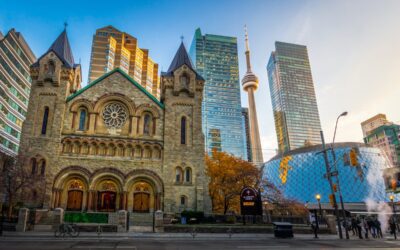
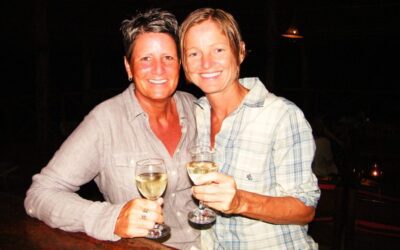
A very thoughtful and beautiful piece.
Thank you Sandra for writing about the Indigenous culture and Mrs P on Labrador. Fascinating.
Thank you for your kind words Joy! Appreciate your comments.